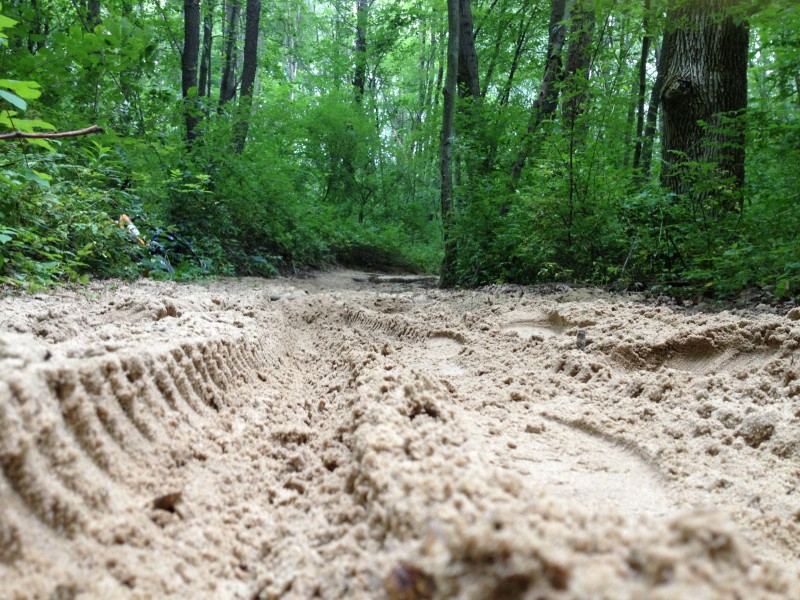
Michigan's Potawatomi Trail in the Pinckney State Recreation Area offers both hikers and mountain bikers an opportunity to enjoy the southeast region of the state.
It’s an odd thing to hike and bike the same trail. What seems slow and dull on feet can transform into an adrenaline-pumping downhill excursion on wheels. A long section of sand can be a dream to a tired hiker’s feet, but it can become a tired biker’s worst nightmare. For the most part, hikers and bikers keep their respective trails to themselves, but in the event that a multipurpose trail becomes necessary whether for spatial, budgetary, or logistical reasons, it seems that one party always loses out.
The Potawatomi Trail in Pinckney State Recreation Area in southeast Michigan advertises itself as both a hike-able and bike-able 17-mile loop, but the trail attracts far more mountain bikers than hikers. No doubt, this is due in large part to the natural terrain of southeast Michigan (i.e. the unfortunate lack of elevation changes). I think most serious hikers would agree that at times, it can be more challenging to hike a mile of flat, unchanging trail than to climb a scenic mile up a mountain. This is what makes the “Poto,” as it as affectionately known, a slog for hikers–17 miles of seemingly similar foliage, geology, and gentle hills that are clearly meant to be tackled with speed, not steps.
By design, the Poto does not lend itself to hikers. There is no summit to reach, no picturesque lake or river to take in, nor are there very many places to stop, rest, and enjoy the natural world. In general, this is the crucial difference between designated hiking and biking trails. A good hiking trail steers hikers through both tight and open spaces, crosses unique topography, and offers visual rewards for trekking to a place only reachable by foot. A good biking trail need not offer stunning views, open air, or a culminating peak (though they are certainly welcome); instead, it requires an appreciation for speed, carefully timed rhythm, and a delicate balance between challenge and entertainment. In short, a good biking trail benefits from man-made design where a hiking trail often does well to stick closer to the natural landscape. It is a rare trail indeed that can satisfy both requirements simultaneously, particularly in the Midwest where summits are rare, and flat, featureless hikes can seem to drone on for miles.
Yet what seems featureless on foot can take on new meaning on wheels. The Poto’s gentle hills are precisely what make the trail so bikeable, and of course, after 10 or so miles on a bike, the gentle climbs no longer seem so gentle. Exposed roots and rocks, along with sections of deep Michigan sand, make for demanding climbs and tricky downhills, which is what makes the trail one of the most popular in the area. For mountain bikers, the trail is a rigorous endurance ride; for hikers, it is a rigorously uneventful trek, rendering itself less a multipurpose trail and more a luring mountain bike trail.
All over the country, there are trails that attempt to cater to the very different worlds of hiking and biking. For both trail builders and trail patrons, however, it is important to keep in mind that members of every outdoor sporting group want something a little different out of their trail. Though space is often limited in suburban recreation areas such as Pinckney, the multipurpose trail should be considered a last resort. To hike is to see the world up close and slowly; to bike is to pass through the world in a blur. To lump these two widely differing experiences of the outdoors together on one trail is to do a disservice to each respective sport. Whenever possible, bike trails ought to be reserved and designed specifically for bikes and hiking trails ought to be reserved and designed specifically for feet.
Image by Jeff Waraniak

 Your Privacy Choices
Your Privacy Choices
 The
The